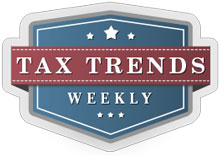Investors Race to Avoid Climbing Tax Rates
The close of 2012 saw a flurry of tax-motivated activity, as investors sought to minimize their tax burden. After President Obama won re-election in November 2012, the expiration of the Bush tax cuts became a possibility. If they had expired, the highest income tax rate for qualified dividends would have gone from 15 percent to 39.6 percent. The highest tax rate on long-term capital gains would have gone from 15 percent to 20 percent. Income tax rates would have increased across the board.
As it turned out, the passage of the American Taxpayer Relief Act (ATRA) in January 2013 limited the increase in income tax rates to the highest bracket, which moved from 35 percent to 39.6 percent. The highest long-term capital gains tax rate did indeed increase to 20 percent. In addition, as a result of the Affordable Care Act, a 3.8 percent tax on high earners’ investment income and a 0.9 percent Medicare tax on high earners’ wages went into effect on January 1, 2013
In light of these changes, financial planners and other advisors told clients to make changes like selling dividend-paying stocks and buying tax-exempt municipal bonds. ATRA dispelled some of the fears people had about the expiration of the Bush tax cuts, but taxpayers’ activity at the end of 2012 illustrated that people- contrary to a few academic studies- will adjust their behavior to reduce their tax burden.

